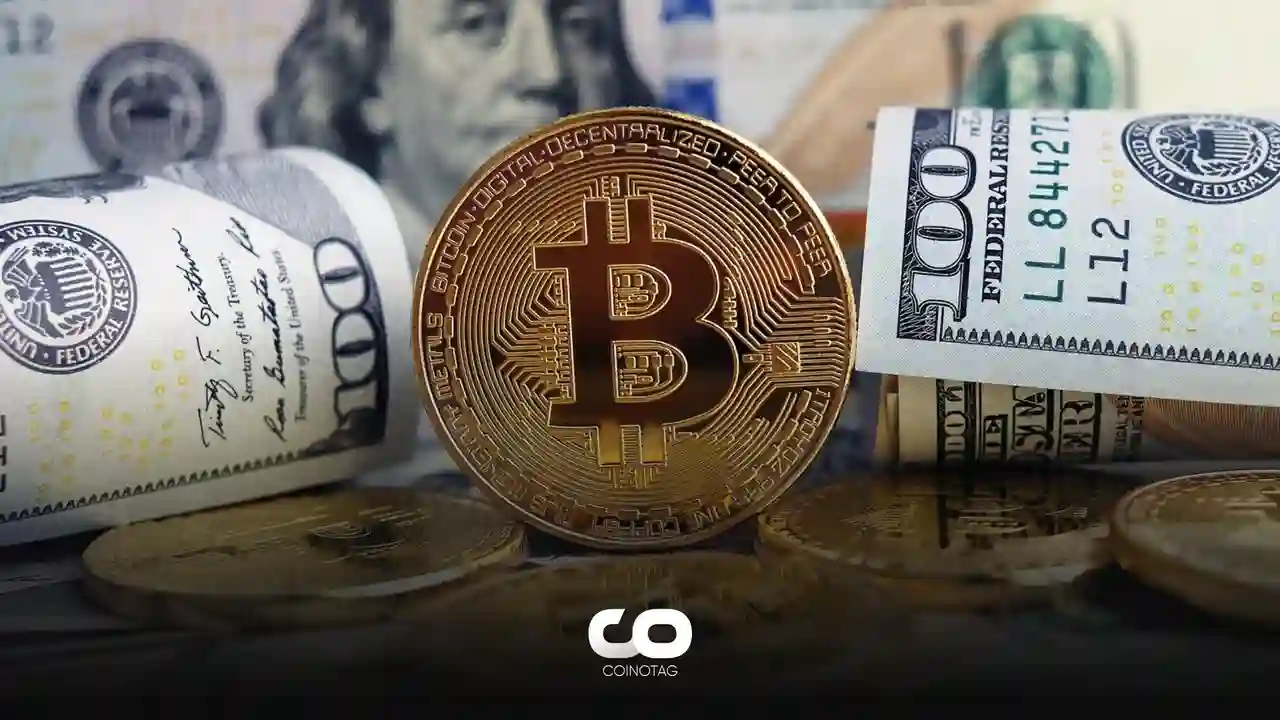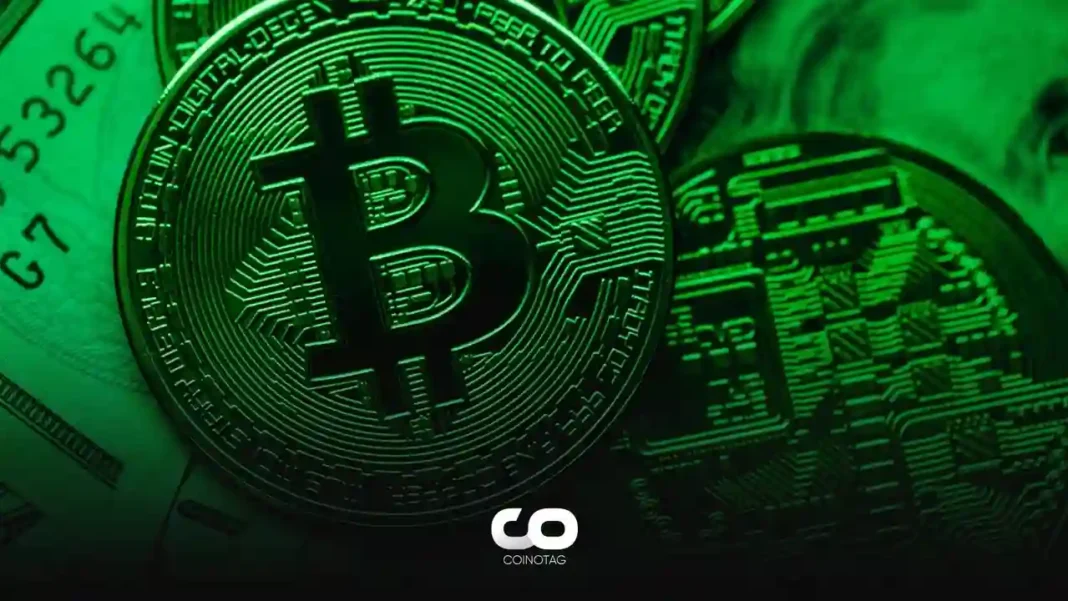| COINOTAG recommends • Exchange signup |
| 💹 Trade with pro tools |
| Fast execution, robust charts, clean risk controls. |
| 👉 Open account → |
| COINOTAG recommends • Exchange signup |
| 🚀 Smooth orders, clear control |
| Advanced order types and market depth in one view. |
| 👉 Create account → |
| COINOTAG recommends • Exchange signup |
| 📈 Clarity in volatile markets |
| Plan entries & exits, manage positions with discipline. |
| 👉 Sign up → |
| COINOTAG recommends • Exchange signup |
| ⚡ Speed, depth, reliability |
| Execute confidently when timing matters. |
| 👉 Open account → |
| COINOTAG recommends • Exchange signup |
| 🧭 A focused workflow for traders |
| Alerts, watchlists, and a repeatable process. |
| 👉 Get started → |
| COINOTAG recommends • Exchange signup |
| ✅ Data‑driven decisions |
| Focus on process—not noise. |
| 👉 Sign up → |
- In-depth analysis by Jordi Alexander, CIO of Selini Capital, explores the potential ripple effects of the US monetary policy on Bitcoin and the crypto market.
- At the heart of Alexander’s argument is the observation that the Federal Reserve’s approach to addressing current economic conditions may be nearing an inflection point.
- The analyst sees recent changes, particularly in long-term bonds, as potential precursors to policy changes.
Jordi Alexander, CIO of Selini Capital, has issued strong criticism of the Fed’s monetary policy: they are losing control of the bond market!
The US is Losing Control of the Bond Market

In-depth analysis by Jordi Alexander, CIO of Selini Capital, explores the potential ripple effects of the US monetary policy on Bitcoin and the crypto market. By drawing connections between traditional financial mechanisms and the emerging digital asset space, the analysis elucidates a series of complex market dynamics that every investor should be aware of.
At the core of Alexander’s argument is the observation that the Federal Reserve’s approach to addressing current economic conditions may be nearing an inflection point. Concerns in the bond market have been growing, with long-term bonds experiencing a 46% drop from their peak values in March 2020. Additionally, 30-year bonds have performed even worse, with a 53% decline.
| COINOTAG recommends • Professional traders group |
| 💎 Join a professional trading community |
| Work with senior traders, research‑backed setups, and risk‑first frameworks. |
| 👉 Join the group → |
| COINOTAG recommends • Professional traders group |
| 📊 Transparent performance, real process |
| Spot strategies with documented months of triple‑digit runs during strong trends; futures plans use defined R:R and sizing. |
| 👉 Get access → |
| COINOTAG recommends • Professional traders group |
| 🧭 Research → Plan → Execute |
| Daily levels, watchlists, and post‑trade reviews to build consistency. |
| 👉 Join now → |
| COINOTAG recommends • Professional traders group |
| 🛡️ Risk comes first |
| Sizing methods, invalidation rules, and R‑multiples baked into every plan. |
| 👉 Start today → |
| COINOTAG recommends • Professional traders group |
| 🧠 Learn the “why” behind each trade |
| Live breakdowns, playbooks, and framework‑first education. |
| 👉 Join the group → |
| COINOTAG recommends • Professional traders group |
| 🚀 Insider • APEX • INNER CIRCLE |
| Choose the depth you need—tools, coaching, and member rooms. |
| 👉 Explore tiers → |
Alexander stated, “I haven’t expressed my macro views for a while – but now it really looks like everything is about to start moving. I’ve been analyzing the consequences of US policy for months. The results I see are starting to show now. Slowly at first… then suddenly, the Fed is going to mess things up.”
The analyst views recent changes in long-term bonds, particularly as a potential precursor to policy changes. In this regard, Alexander refers to a specific announcement highlighted by Dallas Fed President Lorie Logan in a recent Wall Street Journal article. Logan has started expressing concerns about rising Treasury yields and forward premiums, particularly in relation to the previous hawkish stance of the Federal Open Market Committee (FOMC). Her concerns underscore the tension between the need to tighten financial conditions to combat inflation and the tug-of-war between the strength of the labor market and overall economic output.
| COINOTAG recommends • Exchange signup |
| 📈 Clear interface, precise orders |
| Sharp entries & exits with actionable alerts. |
| 👉 Create free account → |
| COINOTAG recommends • Exchange signup |
| 🧠 Smarter tools. Better decisions. |
| Depth analytics and risk features in one view. |
| 👉 Sign up → |
| COINOTAG recommends • Exchange signup |
| 🎯 Take control of entries & exits |
| Set alerts, define stops, execute consistently. |
| 👉 Open account → |
| COINOTAG recommends • Exchange signup |
| 🛠️ From idea to execution |
| Turn setups into plans with practical order types. |
| 👉 Join now → |
| COINOTAG recommends • Exchange signup |
| 📋 Trade your plan |
| Watchlists and routing that support focus. |
| 👉 Get started → |
| COINOTAG recommends • Exchange signup |
| 📊 Precision without the noise |
| Data‑first workflows for active traders. |
| 👉 Sign up → |
Interestingly, Logan believes that reasons for tightening financial conditions, particularly the recent increases in Treasury yields and forward premiums, could reduce the necessity for the Fed to raise the federal funds rate. While interpreting Logan’s shift in perspective, Alexander remarks, “This is my expected Bat-Signal. What does it mean? Why is the Dallas Fed President doing a big baby U-turn? Because they are starting to realize that they are losing control of the bond market!”
Going into more detail about the intricacies of the bond market, Alexander highlighted the difference between the front end and the back end of the yield curve. “The front curve, which includes T-bills and 2-year Treasury notes, is typically very sensitive to the Fed’s interest rate guidance… But they have never had as good control over the back end of the curve, especially for 30-year bonds,” he said. Alexander’s analysis suggests a potential loss of market control by the Federal Reserve, with waning demand for these long-term bonds.
| COINOTAG recommends • Traders club |
| ⚡ Futures with discipline |
| Defined R:R, pre‑set invalidation, execution checklists. |
| 👉 Join the club → |
| COINOTAG recommends • Traders club |
| 🎯 Spot strategies that compound |
| Momentum & accumulation frameworks managed with clear risk. |
| 👉 Get access → |
| COINOTAG recommends • Traders club |
| 🏛️ APEX tier for serious traders |
| Deep dives, analyst Q&A, and accountability sprints. |
| 👉 Explore APEX → |
| COINOTAG recommends • Traders club |
| 📈 Real‑time market structure |
| Key levels, liquidity zones, and actionable context. |
| 👉 Join now → |
| COINOTAG recommends • Traders club |
| 🔔 Smart alerts, not noise |
| Context‑rich notifications tied to plans and risk—never hype. |
| 👉 Get access → |
| COINOTAG recommends • Traders club |
| 🤝 Peer review & coaching |
| Hands‑on feedback that sharpens execution and risk control. |
| 👉 Join the club → |
This evolving bond market scenario leaves the Federal Reserve in a tough spot. Alexander speculates further on this potential dilemma, asking, “What if they agree to stop hiking or even cutting rates but bond buyers still don’t come?” and suggests a potential shift in the Fed’s approach, hinting at a return to quantitative easing (QE) policies.
Drawing parallels with the Japanese financial scenario, Alexander states, “The USD could be the victim of this policy direction, similar to the situation with the Yen in Japan.” He then connects these macroeconomic changes to the digital asset space, saying, “Goodbye Quantitative Tightening, welcome back my old friend Mr. QE. The timeline is uncertain, but it’s time to start paying attention to things like forward premiums, as Dallas Fed and others appear to be.”
Bitcoin and Crypto Could Reap Significant Profits
In the end, QE has been something that Bitcoin and cryptocurrencies have greatly benefited from in previous bull markets. Therefore, Alexander predicts, “Yes, your internet money (i.e., Bitcoin and crypto) can benefit from this.” Interestingly, this view is shared by many analysts.
Arthur Hayes, co-founder of BitMEX, predicts that the Fed will have to reintroduce QE in the near future. Hayes forecasts that Bitcoin’s price will reach $750,000 in 2026.
| COINOTAG recommends • Exchange signup |
| 📈 Clear control for futures |
| Sizing, stops, and scenario planning tools. |
| 👉 Open futures account → |
| COINOTAG recommends • Exchange signup |
| 🧩 Structure your futures trades |
| Define entries & exits with advanced orders. |
| 👉 Sign up → |
| COINOTAG recommends • Exchange signup |
| 🛡️ Control volatility |
| Automate alerts and manage positions with discipline. |
| 👉 Get started → |
| COINOTAG recommends • Exchange signup |
| ⚙️ Execution you can rely on |
| Fast routing and meaningful depth insights. |
| 👉 Create account → |
| COINOTAG recommends • Exchange signup |
| 📒 Plan. Execute. Review. |
| Frameworks for consistent decision‑making. |
| 👉 Join now → |
| COINOTAG recommends • Exchange signup |
| 🧩 Choose clarity over complexity |
| Actionable, pro‑grade tools—no fluff. |
| 👉 Open account → |
However, this perspective is not universally accepted. Yuga.eth from Coinbase believes that Austan Goolsbee relies on the Fed’s commitment to combating inflation. In response, Alexander provides a sharp response, “Increasing debt doesn’t help with inflation in any way. As I initially wrote, the only way to do this properly is to raise taxes, especially on corporations.
| COINOTAG recommends • Members‑only research |
| 📌 Curated setups, clearly explained |
| Entry, invalidation, targets, and R:R defined before execution. |
| 👉 Get access → |
| COINOTAG recommends • Members‑only research |
| 🧠 Data‑led decision making |
| Technical + flow + context synthesized into actionable plans. |
| 👉 Join now → |
| COINOTAG recommends • Members‑only research |
| 🧱 Consistency over hype |
| Repeatable rules, realistic expectations, and a calmer mindset. |
| 👉 Get access → |
| COINOTAG recommends • Members‑only research |
| 🕒 Patience is an edge |
| Wait for confirmation and manage risk with checklists. |
| 👉 Join now → |
| COINOTAG recommends • Members‑only research |
| 💼 Professional mentorship |
| Guidance from seasoned traders and structured feedback loops. |
| 👉 Get access → |
| COINOTAG recommends • Members‑only research |
| 🧮 Track • Review • Improve |
| Documented PnL tracking and post‑mortems to accelerate learning. |
| 👉 Join now → |








